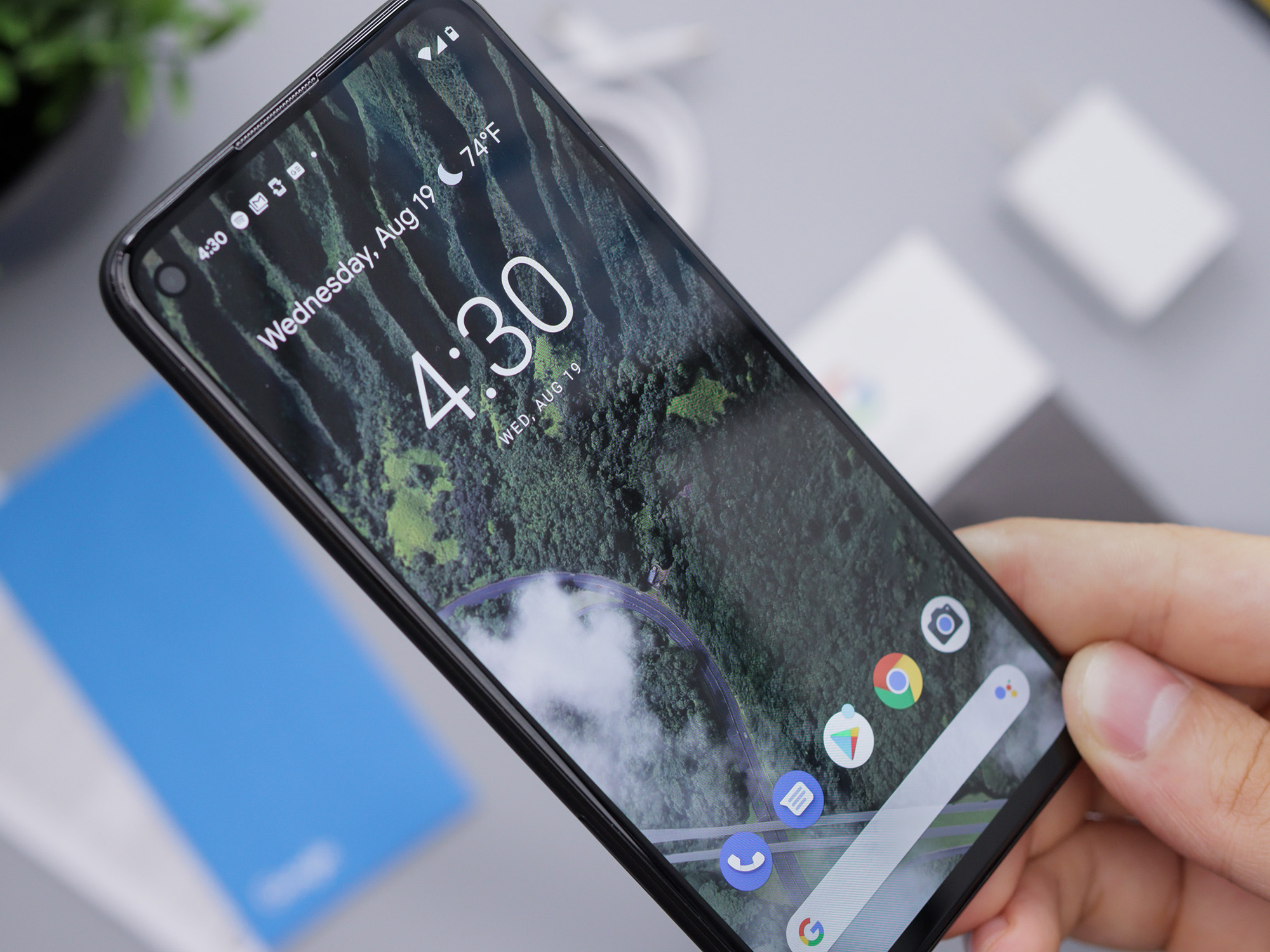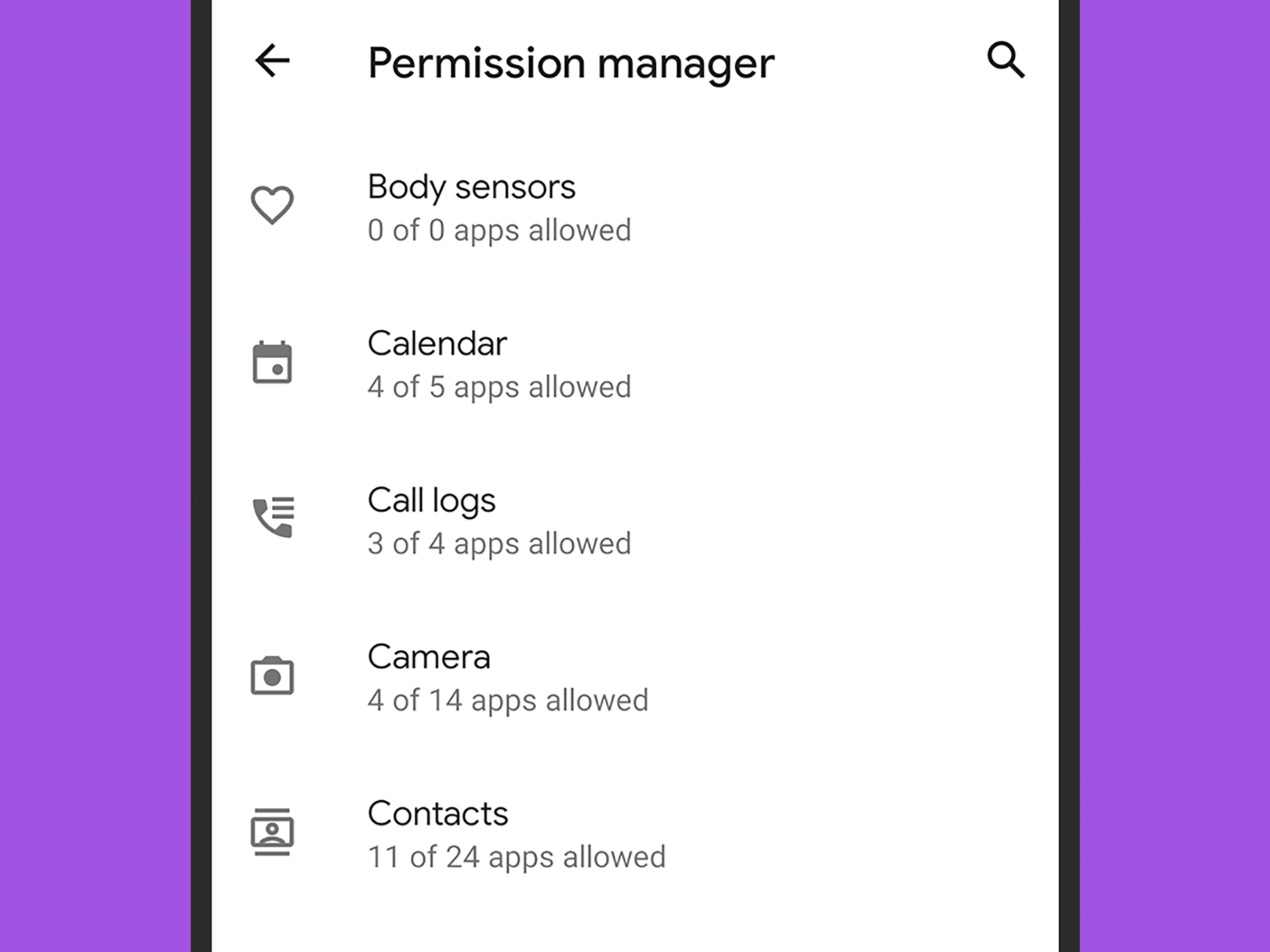

Most of your life is on your phone, so you might as well protect it as much as possible. The good news is that Android can help.
With security features that apply to your device or your Google account on all devices, keeping your data safer is only a tap away.
Find out which apps are doing what (and how to stop them)
Go to Permission Manager by tapping Settings, and then Apps and Notifications—this is where you’ll find out which apps are allowed to do what on your phone. This screen will also let you control access to everything from your contacts to the microphone, and if there are any permissions you aren’t happy about, you can easily revoke them.
Apps can’t grab data without your specific authorization, so you don’t have to worry about that new social media platform you’re trying out suddenly launching the camera or recording your voice before you’ve agreed to anything. However, you may have approved a permission without giving it much thought, or granted an app access to certain data long ago, and now you’ve changed your mind.
On Android 11, the latest iteration of Google’s operating system, some permissions have more than one option to pick from. For example, you can grant an app access to your location all the time, only while using the app, have it ask you every time, or simply deny it. These granular settings allow you to assign different levels of trust to different apps so the carpool platform you rarely use only has the right amount of data on you.
Go even deeper by using Special App Access
This menu lets you manage a more advanced level of permissions for your apps, such as access to features like the battery optimization, installing unknown apps from outside the Play Store, or modifying low-level system settings such as which gestures launch which actions. Find this screen by going to Settings and choosing Apps and Notifications.
As with the permissions manager, tap any item on the list to see what apps have access to a given feature. If you want to revoke permissions at any point, you simply have to turn the relevant toggle switch off. Again, apps can’t get any of these privileges without your explicit authorization, but it’s always a good idea to check this page regularly.
Some things are best kept private
You don’t necessarily want all of your messages, dating alerts, and banking app updates showing up on the lock screen for anyone and everyone to see. Go to Settings, Display, Advanced, and Lock Screen, to stop this from happening. Tap Notifications on lock screen and you can opt to show all or none of the content behind the notifications on your lock screen.
You can also have Android decide what to show, and only display notification content the operating system deems non-sensitive. In that case, you don’t get much control over what you see, but rest assured that anything from a messaging app, for example, would be deemed sensitive.
Close the window of opportunity to a possible data breach
Go to Settings, Display, Advanced, and finally tap on Screen timeout. The period of time listed on this menu—ranging from 15 seconds to 30 minutes—controls how long your phone will sit idle before going into standby and displaying the lock screen. It might be annoying to have to unlock your phone constantly to access it, but from a security perspective, you want this time frame to be as short as possible—it’ll reduce the chances of someone else gaining access to your data if your device is stolen or you leave it unattended.

Protect your passwords and information
The menu under Settings and Privacy is an alternate way to the permissions manager and notification content screens, but here you can also turn off the feature that briefly shows password characters as you type them—just in case someone might be looking over your shoulder.
Tap Advanced and you’ll be able to take charge of the information Google is allowed to collect on you through Android—from the websites you’re visiting to the places you’re going to. You can tweak these same settings if you’re on the web.
These controls are more about your privacy and your relationship with Google than actual Android security, but it’s worth noting that the less data you share, the safer you are. Even if you trust Google to handle your information respectfully, you have to assume anything you share with them or any other tech company might eventually fall into the wrong hands and be used in malicious ways. Being preemptive is the key, here.
Three words: lock your phone
The Security menu, which is exactly where you would expect Android’s security features to be—under Settings—is home to a host of useful functions. The top section is more of a status panel rather than anything you can actually interact with, but there are other options you can look into.
You should absolutely make use of the Screen lock feature, which will let you protect your phone with a fingerprint, face, PIN, or pattern, depending on the make and model of your device, and the biometric security features that come with it. With no protection in place, anyone can unlock your phone and access your apps and data.
Never lose your phone again
There’s one important security feature on this menu: Find My Device. You should make sure this is enabled so you can track your phone if it ever gets lost. This feature also allows you to wipe out all your data remotely if your device ends up in someone else’s hands.
The same page shows the status of Google Play Protect, which is the malware-scanning feature built into the Play Store app.
Always be prepared
Open up the System menu (under Settings) to access two important features. The first is Backup, which you’ll be glad to have in place if anything unfortunate should happen to your phone. Google will back up your device to the cloud regularly and for free, so make sure you’re taking advantage of it.
Secondly, if you tap Advanced and then System update, you can make sure you’re running the latest version of Android available for your handset. From a security perspective, it’s crucial that your OS is always as up to date as possible, as this will ensure you have the latest patches and fixes.
